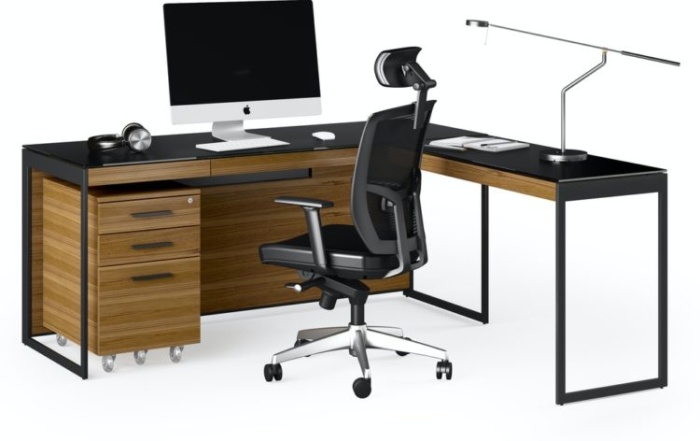The workplace has always been a reflection of the times. From the rigid, hierarchical layouts of the mid-20th century to the fluid, open environments of today, office design has evolved in tandem with cultural shifts, technological advancements, and changing attitudes toward work itself. At the heart of this transformation lies commercial office furniture west palm beach—a seemingly mundane aspect of the workplace that, in reality, plays a pivotal role in shaping how teams function, communicate, and thrive.
The journey from cubicles to collaborative spaces is not just about aesthetics. It’s a story of how organizations have come to understand the importance of human-centered design, and how furniture has become a tool for fostering innovation, inclusivity, and well-being.
The Rise and Fall of the Cubicle
In the 1960s, the cubicle emerged as a revolutionary concept. Designed by Robert Propst for Herman Miller, the original idea behind the cubicle was to create a flexible, efficient workspace that could adapt to the needs of individual workers. It was meant to be liberating—a departure from the open bullpen-style offices that dominated the era.
However, the cubicle’s promise was quickly compromised. In the pursuit of cost-cutting and space maximization, companies adopted a standardized, high-walled version of the cubicle that prioritized density over comfort. These uniform boxes became synonymous with isolation, monotony, and a lack of creativity. Popular culture lampooned the cubicle as the epitome of soulless corporate life, and employees began to crave something more dynamic and engaging.
The Shift Toward Collaboration
As the nature of work began to change, so too did the expectations of the workplace. The rise of the knowledge economy, the proliferation of digital tools, and the growing emphasis on teamwork and innovation demanded a new kind of office environment. Static, siloed workspaces were no longer sufficient. Organizations needed layouts that encouraged interaction, supported diverse work styles, and reflected a more egalitarian approach to management.
This shift gave birth to the open office—a layout that removed barriers and encouraged spontaneous collaboration. Furniture followed suit, with long communal tables, lounge-style seating, and mobile workstations replacing the traditional desk-and-chair setup. The goal was to create a space where ideas could flow freely and teams could work together seamlessly.
Designing for Flexibility
One of the defining characteristics of modern office furniture is its adaptability. Today’s teams are fluid, often working across departments, locations, and time zones. Furniture must support this flexibility, allowing spaces to be reconfigured quickly and easily to suit different tasks and group sizes.
Modular furniture systems have become increasingly popular, offering components that can be rearranged to create everything from private nooks to large meeting areas. Mobile chairs and desks, foldable partitions, and multi-purpose tables enable employees to take control of their environment, fostering a sense of ownership and autonomy.
This flexibility is not just practical—it’s empowering. When employees can shape their workspace to fit their needs, they feel more engaged and invested in their work. It also allows organizations to respond to changing demands without the need for costly renovations or redesigns.
Balancing Collaboration and Focus
While open offices and collaborative furniture have many benefits, they are not without challenges. Noise, distractions, and a lack of privacy can hinder productivity and increase stress. As a result, designers have begun to explore hybrid models that balance openness with the need for focused work.
Acoustic furniture, such as sound-absorbing panels and enclosed pods, helps mitigate noise and create quiet zones within busy offices. Adjustable screens and movable walls offer visual privacy without sacrificing connectivity. Ergonomic chairs and desks ensure that employees can work comfortably for extended periods, reducing physical strain and promoting well-being.
The key is to provide choice. Not every task requires collaboration, and not every employee thrives in the same environment. By offering a variety of spaces—each designed with specific functions in mind—organizations can support a diverse range of work styles and preferences.
The Role of Technology
Technology has become an integral part of office furniture design. From desks with built-in charging stations to conference tables equipped with video conferencing tools, furniture is increasingly designed to support digital workflows and remote collaboration.
Smart furniture is also on the rise, with sensors that monitor usage, adjust lighting and temperature, and provide data on how spaces are being utilized. This information can help organizations optimize their layouts, improve energy efficiency, and create environments that truly respond to the needs of their teams.
Looking Ahead
As remote and hybrid work models become more common, the role of the office is evolving once again. Rather than being a place where work is done, the office is becoming a hub for connection, culture, and collaboration. Furniture will continue to play a central role in this transformation, helping to create spaces that are welcoming, inclusive, and conducive to meaningful interaction.
Designers are now focusing on furniture that supports wellness, sustainability, and community. Biophilic elements, such as natural materials and greenery, are being integrated into furniture to create calming, restorative environments. Recycled and responsibly sourced materials are becoming standard, reflecting a growing commitment to environmental stewardship.
Conclusion: Furniture as a Catalyst for Change
The evolution of office furniture from cubicles to collaborative spaces mirrors a broader shift in how we think about work. No longer just a backdrop to daily tasks, furniture has become a catalyst for cultural change, shaping how teams connect, create, and grow.
By investing in thoughtful, flexible, and human-centered furniture, organizations can build environments that support not just productivity, but also well-being, innovation, and a sense of belonging. In the modern workplace, furniture is more than functional—it’s foundational. Discover innovative workspace solutions tailored to your business needs at the corporate office—where design meets functionality.
We hope you found this blog post From Cubicles to Collaboration: Office Furniture for the Modern Team, useful. Be sure to check out our post, Cubicle Disassembly Guide: How to Move Office Cubicles Cheap and Easy, for more great tips!
Have Experience in the Moving Industry? Want an Additional Income Stream? Work With All Around Moving!
All Around Moving’s Work With Us program provides experienced moving consultants with the opportunity to run their own Relocation Consultant business from anywhere in the USA. In fact, we provide licensing, dedicated phone lines, and email hosting. Likewise, moving software for lead tracking, invoicing, and a complete setup.
We’ll even provide the carriers, or you can use your own. A nominal one-time start-up fee gives you initial customer leads to get your business up and running. There are no recurring expenses, except for purchasing your own leads. We share profits 50%-50% with you from all jobs you book with us. Click here to learn more.






